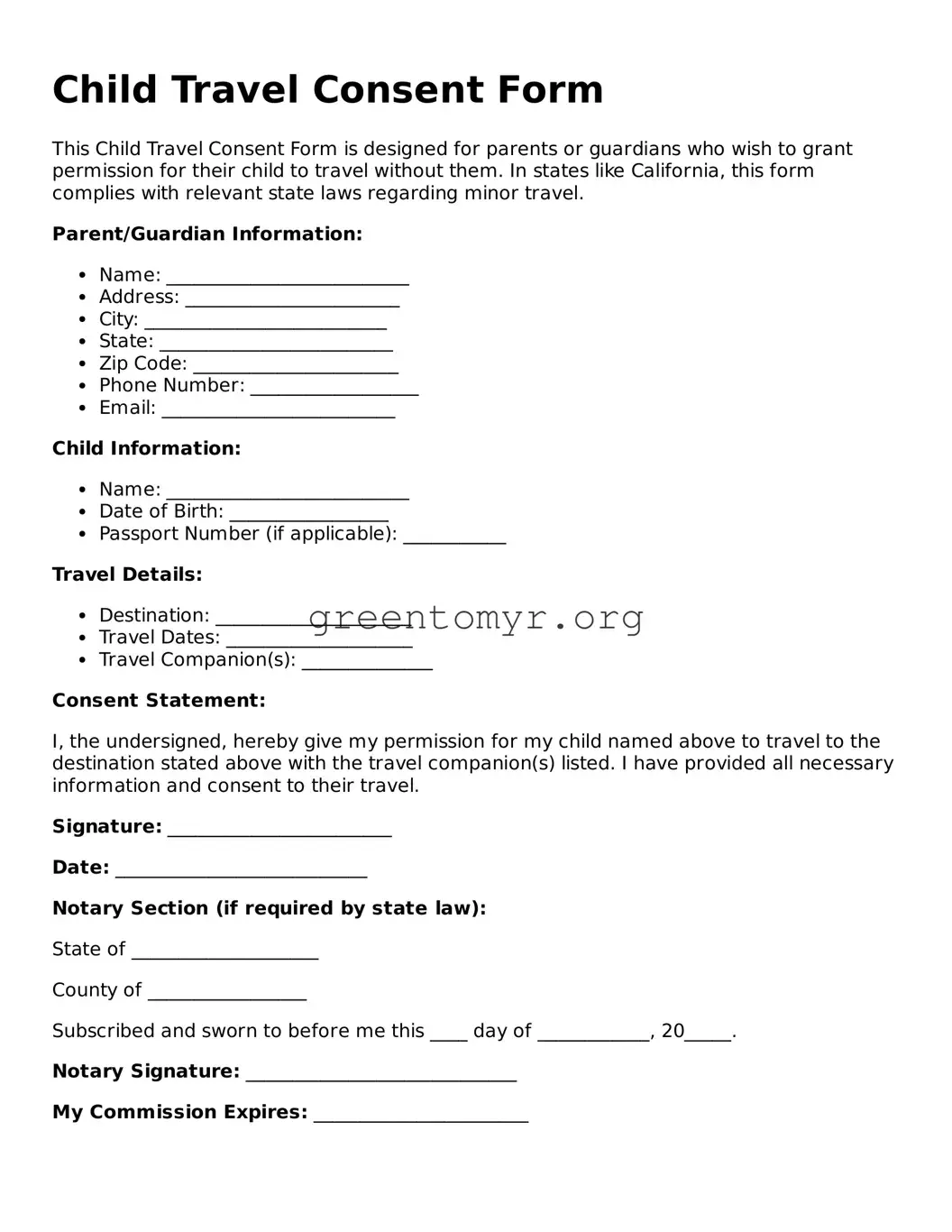Child Travel Consent Form
This Child Travel Consent Form is designed for parents or guardians who wish to grant permission for their child to travel without them. In states like California, this form complies with relevant state laws regarding minor travel.
Parent/Guardian Information:
- Name: __________________________
- Address: _______________________
- City: __________________________
- State: _________________________
- Zip Code: ______________________
- Phone Number: __________________
- Email: _________________________
Child Information:
- Name: __________________________
- Date of Birth: _________________
- Passport Number (if applicable): ___________
Travel Details:
- Destination: _____________________
- Travel Dates: ____________________
- Travel Companion(s): ______________
Consent Statement:
I, the undersigned, hereby give my permission for my child named above to travel to the destination stated above with the travel companion(s) listed. I have provided all necessary information and consent to their travel.
Signature: ________________________
Date: ___________________________
Notary Section (if required by state law):
State of ____________________
County of _________________
Subscribed and sworn to before me this ____ day of ____________, 20_____.
Notary Signature: _____________________________
My Commission Expires: _______________________
